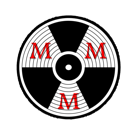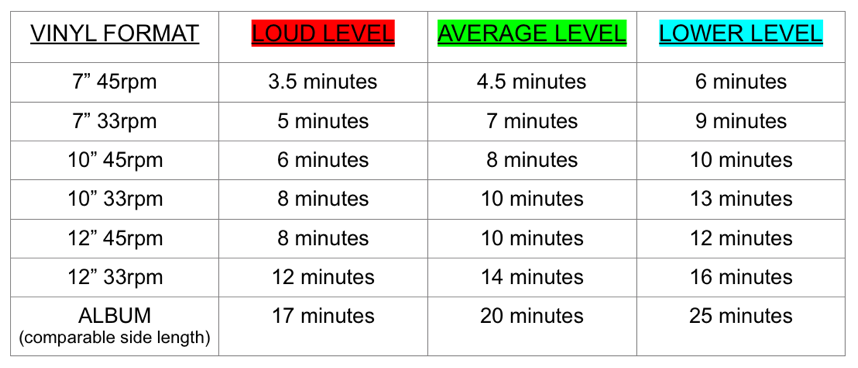

Vinyl information

Mike Marsh Mastering
Mike Marsh Mastering is very proud to still be at the forefront of cutting records and supplying lacquer masters for the production of vinyl. It’s the format that Mike trained on at the start of his mastering career and consequently he holds it very close to his heart.
Every lacquer is painstakingly produced to provide the optimum sonic transfer to disc using a modified Neumann VMS70 Lathe and modified SAL74B Cutting Amplifiers – the lathe that is responsible for an enormous amount of hit records with its past masters reading like a music industry hall of fame! For full details, download Mike’s Discography from our Engineers Page.
Mike has always preferred the ‘all hands-on deck’ approach when cutting master lacquers and uses a pure solid-silver analogue path to the lathe with no vari-groove or digital delay line. Mike will tell you,
“Why do I need a delay line and vari-groove when I can vari-groove by hand and operate the lathe manually – and it sounds better? Coupled with the fact that many lacquers are cut from sound files where you can actually see the audio coming, I can work better than a digital vari-groove system by just using my eyes!’
Vari-groove is the means of controlling the pitch motor of the lathe by speeding up or slowing down the motor, therefore opening the groove out on itself during loud and dynamic moments or closing it up tight on itself during quiet sections of the music. This process is useful to make optimum use of the vinyl playing surface area and not waste valuable outer-diameter portions of the disc which retain the best quality sound.
Cutting records is not something you can learn in five minutes and it takes a good few years to master it properly. It’s a very physical process because you’re dealing with a moving, modulating, wobbling groove that’s crammed full of information! Mike will also tell you it’s still one of the best sounding formats to listen to music on – even today!
“With this Neumann VMS70 disc mastering set-up capable of cutting harmonics and frequencies way above our normal hearing range it’s a system that still has a better dynamic range and frequency response than many other formats!”
We cut master lacquers for LPs, 12”, 10” and 7” singles as well as master lacquers for picture discs. We also cut instantly useable ‘playback acetates’. Lacquers for vinyl production are usually cut on 14” master discs whereas playback acetates are usually cut on a disc the size of its eventual manufactured format.
When a master record is cut, test cuts are first made on a separate lacquer and then played back to determine the quality of the sound transferred to disc. But once you commit to a master lacquer for production you never play this back as it will damage the very sensitive information contained within the groove.
Playback acetates are cut in the same way as a master lacquer and can be used as an instant reference to how your record will sound before it goes through the manufacturing process. They are playable on conventional turntables, but it must be remembered that they have a limited shelf life and will deteriorate with every play.
IF YOU WOULD LIKE TO SEE VIDEO OF THE VINYL PRODUCTION PROCESS PLEASE CLICK ON THE LINKS
AT THE BOTTOM OF THE PAGE
In reality, a good-sounding set of tracks mastered for digital / CD will also make for a good vinyl master but there are a few extra things that need to be taken into consideration when you cut a record due to the physical nature of the medium and the manufacturing process involved in producing pressings.
The main consideration to be aware of is the total playing time of the material to be cut into one side of the record. The best way to summarise this is the longer the record, the quieter it will be in terms of volume. The loudest records are nearly always the shortest! That’s why singles are always louder than albums.
When cutting a record, you may have to cut between 3 and 35 minutes of audio into one side of a disc - depending on the format, and it’s this running time which dictates how loud your record will be.
SEE THE CHART ABOVE REGARDING RECOMMENDATIONS RELATING TO RUNNING TIMES FOR SIDES OF VINYL
Other issues which need taking care of when producing a lacquer master are excessive high-frequency content and / or vocal sibilance, and the likelihood of distortion. High frequencies are cut cleanly to the master lacquer but, often, many playback styli cannot reproduce them properly unless you’re using a broadcast tone arm and broadcast playback stylus. With this in mind, some gentle de-essing often takes place to soften the impact of things like big cymbal crashes and hi-hats within the music programme along with big “esses” and “effs” in vocal performances to ensure clean playback on all turntables in the ‘outside world’!
It’s also useful to realise that the fidelity and high-frequency response of a record gets worse as you travel towards the centre. This is due to decreased surface area of the disc coupled with ‘inner diameter distortion’ which effectively and incurably rolls off the high frequency content of the material. When thinking about which tracks will go where on a record it’s worth keeping big, bright sounding tracks towards the outer edge of the disc leaving the chilled out, mellower ones towards the centre.
Another issue which can cause cutting engineers a problem when trying to master a record is excessive stereo width - particularly that of lower-frequency content.

We’re dealing with a physical medium and a moving groove. The motion of the cutting stylus when cutting a groove is one of a left to right nature and an up and down nature with regard to stereo information. Extremes of excessive lower frequency stereo width can cause the cutterhead and cutting stylus to bounce up and down whilst cutting the groove resulting in the cutterhead actually leaving the surface of the lacquer and rendering the groove it’s cutting disappearing completely. This results in a jumping record. The usual way this is dealt with is by the gentle use of an elliptical EQ which will draw back and narrow the out-of-phase portion of the low-frequency content causing the problem.
It should also be noted that a mastered lacquer should be sent to your choice of manufacturer as soon as it is cut. Lacquers need processing quickly otherwise the very fine groove-wall that has been cut into them starts to slowly collapse in on itself. This causes problems with processing and, in short, affects the sound of the finished record.
Always arrange for a manufacturer at the time you make a booking to cut your record. We can ship the mastered lacquer direct from our studio to the manufacturer of your choice speeding up the time in which it will take to get your record from lacquer to pressing.
We will also need to know a Catalogue Number / Matrix Number for your release at the time of booking. Once a master lacquer is cut, this number is etched into the outer edge of the disc uniquely identifying it to the manufacturer.
After we cut your record, it’s also possible to inscribe a personalised message into the run-out groove of the lacquer. This message will then appear on each and every one of your pressings! If you’ve already noticed ‘Mikes – The Exchange’ in the run-out groove of your favourite record you’ll know what we mean! (This was Mike’s tag in the run-out groove of many records mastered during his time at The Exchange Mastering Studios).
We’ll need to know any personalised messages at the time of booking because once the mastered lacquer is boxed up an on its way to processing, it’s too late!
MIKE MARSH MASTERING ALSO RECOMMENDS YOU HAVE A TEST PRESSING MADE OF YOUR RECORD BEFORE YOU COMMIT TO A VINYL PRODUCTION RUN
A test pressing is produced by your manufacturer in advance of the main pressing run. Provided the processing stages have completed successfully, this pressing will give you an idea of what your pressings will sound like once the main pressing run is complete.
MIKE MARSH MASTERING CANNOT BE HELD RESPONSIBLE FOR ANY SONIC OR TECHNICAL DEFECT BEYOND THE
TEST PRESSING STAGE
It should be noted that the above table is a general guideline. Musical style and content can also affect overall volume parameters versus side length. For example, it’s possible to cut much longer sides of mellow acoustic music or spoken word at a reasonable level than it would be to cut a full blown rock band / electronic dance track!
It’s also worth pointing out that it’s possible to cut lacquer sides longer in duration than is shown in the ‘lower level’ part of the table but it must be remembered that cutting volumes are further reduced therefore increasing the vinyl signal-to-noise ratio. Vinyl pops, crackles and clicks appear more noticeable and seemingly louder due to the reduced cutting volume of the playback material.
Further costs can also be incurred when stretching vinyl duration sides to absolute physical maximums both at the cutting / mastering stage and processing stages.
During the cutting stage there is much more room for error when dealing with side lengths that are at physical limits due to greatly reduced groove-depth and the increased risk of inter-cutting where grooves can overlap each other. An extra material cost charge will be made in respect of very long sides due to the need for extensive test cutting and use of extra blank master lacquers in the process.
There can also be problems during the processing and plating stages because of the greatly reduced groove-depth and the fact that the grooves have to be bunched up very tight together.
Never say never though; Mike remembers cutting an album on Island Records in 1989 (ILPS 9937) for the comedian Lenny Henry (Live and Unleashed), which was a mixture of musical tracks, skits and vocal comedy sketches with a total running time of something like 37 – 38 minutes per side! “It was hard work – but we did it!”
We look forward to hearing from you!